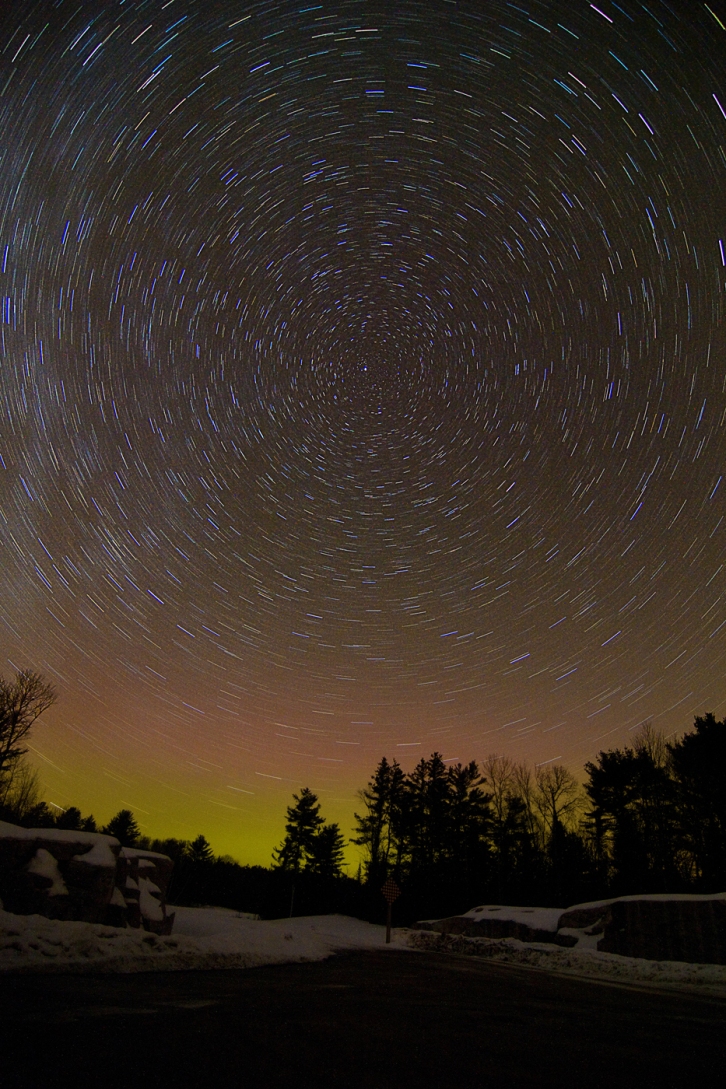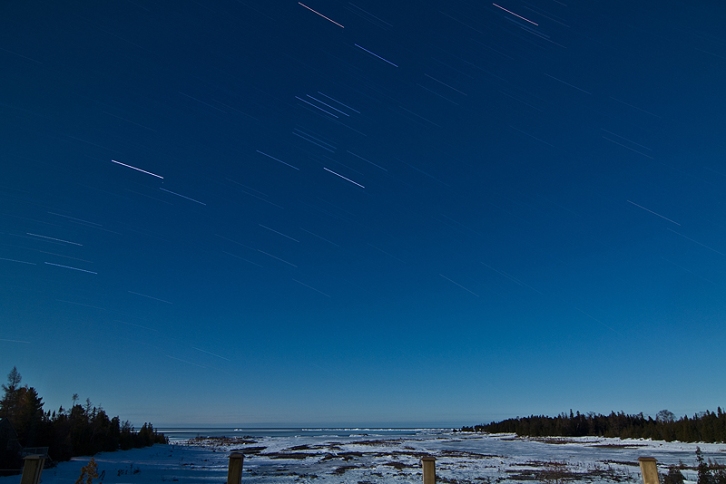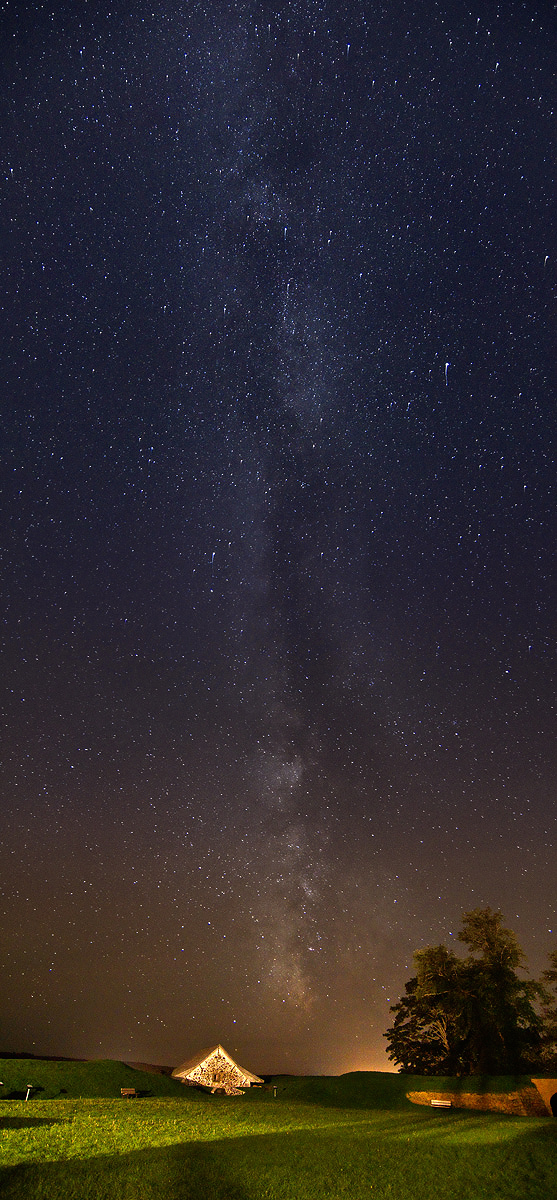Photo-Take-Outter Friday #4 – Star photography
ByStar photography and northern light hunting is a favourite hobby of ours. I love long exposure shots (and that feeling when you hold your breath and wait to see what the photo will look like). Here are a few of my favourite images, and what I did to get them:
To avoid repetition: all of these photos are taken using a Canon 7D, tripod mounted and using a remote release to make sure
- that I didn’t move the camera at all, even just to press the shutter button, and
- that I had the ability to lock the shutter down for extended periods
Nobel, Ontario – just north of Parry Sound.
This shot got me freshly pressed – thanks wordpress! I lied earlier about all of them using tripods – believe it or not this was dashboard mounted instead. By mounted I mean propped up using mittens and knitting. It was so windy that I didn’t think the camera could be still long enough, and yes, I am shooting through the windshield.
- Exposure time: 20 minutes
- ISO: I’m using an ISO of 100 – anything higher and the shot would have blown out over such a long period.
- Lens: Tokina 12-24, f4.0 wide angle
- f-stop: Wide open baby! As it should always be for long exposure star shots. On my lens this meant f4.0
- White Balance: Set to auto – there was a slight glow on the horizon from aurora and I didn’t want to compromise that.
- Camera Mode: BULB. Bulb means that the shutter is open as long as you have your finger on the shutter button, or as long as you have your remote locked. On other models you go to MANUAL and roll right on past the 30 second shutter mark, the next increment will just say ‘bulb’.
- Post Production: Almost none – the stars were so clear already, and there was no noise thanks to the 100 ISO. I used a high pass filter just to pop the stars a bit more and that was it.
Tobermory, Ontario
For this shot I had the luxury of being in a beautiful B&B living room with a huge picture window facing west. The camera is on a tripod and shooting through glass. When you shoot through glass always make sure nothing on your camera is causing a reflection – in this case I had to use a toque to cover up the red shutter lamp on the back.
- Exposure time: 20 minutes
- ISO: I’m using an ISO of 100 – anything higher and the shot would have blown out over such a long period.
- Lens: Tokina 12-24, f4.0 wide angle
- f-stop: I squeezed it down to f6.0 for this one, because I knew I was going for a long exposure and I didn’t want the shot to overexpose.
- White Balance: Set to tungsten. I was trying to compromise for the lights of a house near me and the result was this gorgeous blue.
- Camera Mode: BULB.
- Post Production: None. I was absolutely delighted when I saw the shot :)
Annapolis Royal, Nova Scotia
This shot is a 3 photo vertical stitch of the Milky Way. It was beautifully clear that night and I had to get as much into one photo as I could. This was taken from the grounds of Fort Anne.
- Exposure time: 3 shots at 20 seconds each. Because I was stitching afterwards I didn’t want the stars to ‘streak’.
- ISO: 500 – I needed to get them as bright as I could without needing a really long shutter
- Lens: Canon 24mm f2.8 prime
- f-stop: f2.8, again because they were such short shots.
- White Balance: Auto
- Camera Mode: Manual
- Post Production: 3 photo vertical stitch (no tricks needed for the stitch, photoshops default was perfect) Noise reduction was also needed because of the ISO 500.
Hopefully that was useful to aspiring star photographers out there – if you take your own star pics and feel like sharing I’d love to see them :)




All of these are beautiful but the last one is absolutely breath taking!
LikeLike
amazing pictures. thanks for sharing. the first one is my favorite.
LikeLike
These shots are inspiring!! I’m glad you gave the details for each photo. Star photography seems magical, and I’d love to give it a shot when I get away from city lights. I especially love the vertical stitch at the end.
LikeLike
Great masterpeice, I learned alot from your blog :) keep it up
LikeLike
Great tips!!! That last picture is fantastic!
LikeLike
Question on the last one, actually…the way to get a clear shot of a star field without the light trails is to….what exactly? Is that where the “stitching” of multiple images comes in to play?
LikeLike
Hi fantastic tips
Just want tokmow what you mean by exposure time
İ have a canon 60d im just starting new. Which lens would you recommend
İ have the stock 18-55 mm canon lens
Ta
Senol
LikeLike
The few streaks in the stars are satellites? or jets?
LikeLike
This is something incredible! Very inspirational.
LikeLike
hi!! I love your pics especially the picture from Nova Scotia. Do you mind if I use this picture as a background to inscribe a quotation and post it on Facebook? Thank you!
LikeLike
Hi there! Thank you for taking the time to ask me :) I do prefer to keep my photography off of Facebook though, so I would ask that you please refrain from using my image in that way. I appreciate you making the inquiry though, I’m glad you love the shot and I wish you all the best :)
LikeLike